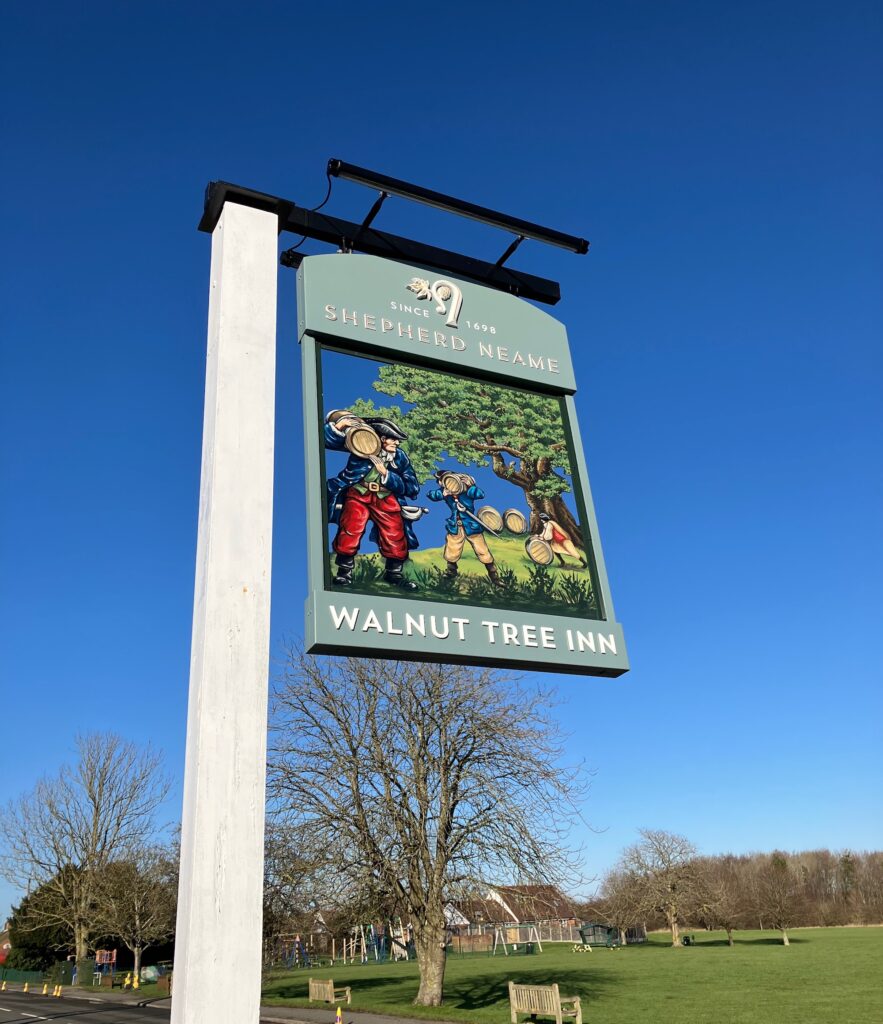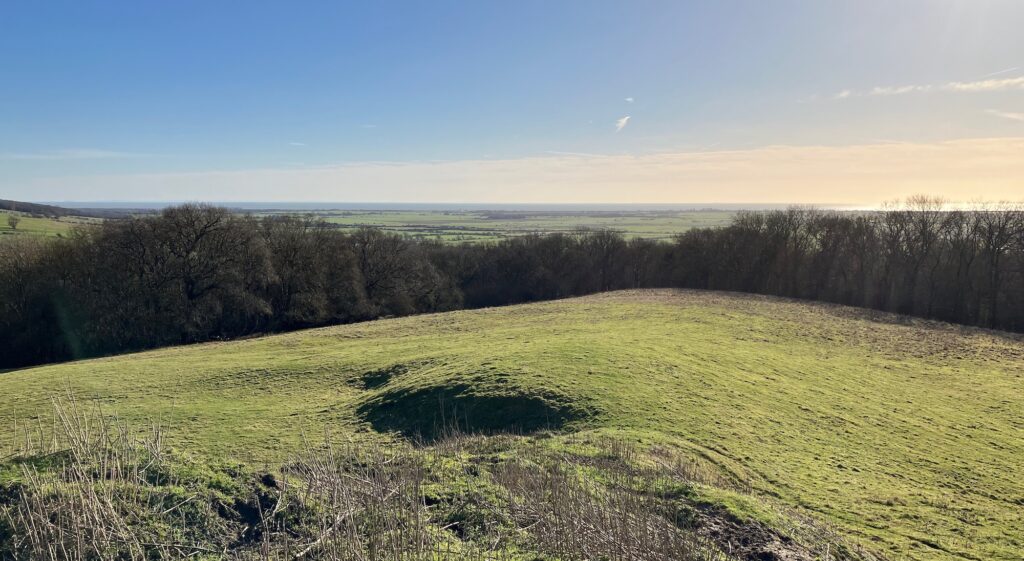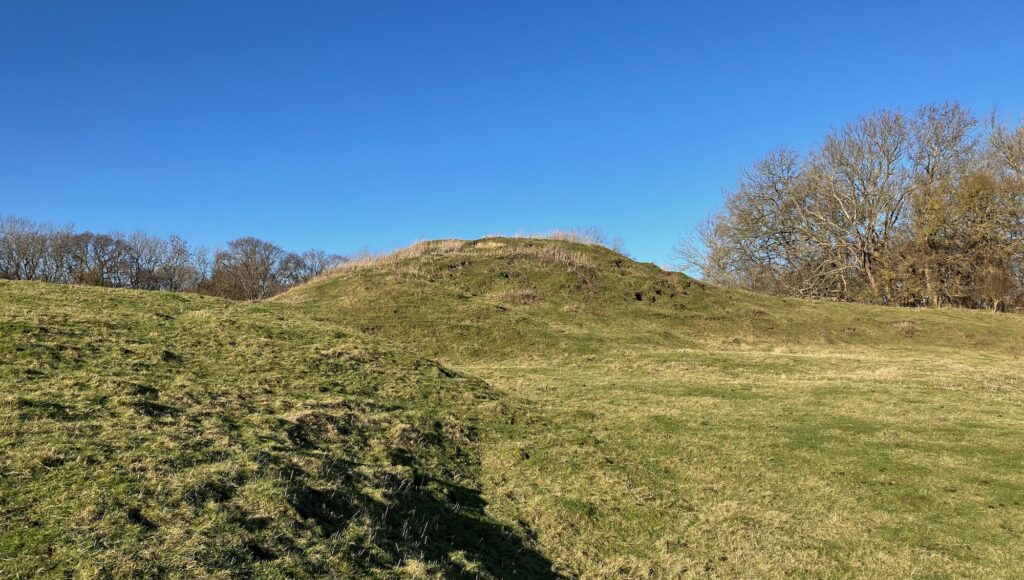For a small, isolated village on the fringes of Romney Marsh, the parish of Aldington has been home to a ridiculous number of famous residents, dating all the way back to the Roman occupation.
As I discussed earlier, in the 16th century it was the birthplace of Elizabeth Barton, the Holy Maid of Kent, who prophesized against King Henry VIII and was beheaded for her troubles. More recently, it has been home to influential writers and raconteurs such as Noël Coward, Joseph Conrad and Ford Maddox Ford. Until a few years ago, Noël Coward former residence, Goldenhurst Farm, was home to the comedian Julian Clary, who moved there at the suggestion of another fabulous villager Paul O’Grady – aka Lilly Savage – who lived in Aldington for 20 years before his sudden death last year.
However, it is another group of colourful characters, collectively known as The Blues, who are the subject of this article.
The Blues were a notorious gang of smugglers who came together at the end of Napoleonic Wars when hundreds of demobilised men returned home to find little or no “honest” work available in the parish. They used their military experience and tactical knowledge to create a highly disciplined and effective unit that controlled the smuggling business along the south coast of Kent for more than a decade.
The gang came to prominence in 1821 during the infamous Battle of Brookland on Romney Marsh. The Blues were caught in the act of unloading contraband by customs officers on Camber Sands and skirmishes ensued. The Blues managed to retreat about five miles inland to the village of Brookland where a pitch battle developed. At least five men were killed and more than 20 injured. The Blue’s by then intoxicated leader, Cephas Quested, was arrested after mistakenly handing his gun over to a customs officer with the instruction to “blow (another officer’s) brains out.” The perplexed Quested was hauled off to Newgate jail, sentenced to death and hanged on 4 July 1821.
The gang was then taken over by the rather more capable leader George Ransley, who instilled a greater sense of discipline in his men and forged closer links with the local community so as to ensure loyalty and protection from the customs brigade. The gang used the Aldington village pub, the Walnut Tree Inn, as their headquarters and drop off point. It is an association that the Walnut Tree Inn is still immensely proud of as can be seen from the sign outside which features blue-coated smugglers unloading their booty.

Under Ransley’s leadership, the Blues operated successfully along the south Kent coast until July 1826 when the gang killed a well-liked and respected Midshipman, Richard Morgan, during a raid at Dover. By this time, the gang was beginning to lose public support and eventually Ransley was arrested after several locals came forward with information against him. However, the authorities did not have conclusive evidence that that it was Ransely who killed Richard Morgan, so rather than being executed, Ransley was sentenced to deportation. He was dispatched to Tasmania where after serving his time, he established his family on a successful farm. His descendants still live in Tasmania.
Local legend has it that Ransley was a giant, well over six feet tall, a story perhaps inspired by another giant who was supposed to be buried in Aldington Knoll, a Roman long barrow just below the village. The knoll has commanding views across the marshes and was used by the Blues as a signalling point for their confederates on the coast.

The view from the top of Aldington Knoll
Any attempt to level this key vantage point, it is said, will meet with a gruesome end, as described by an old smuggler in Ford Maddox Ford’s poem Aldington Knoll.
A L’INGTON Knoll it stands up high,
Guidin’ the sailors sailin’ by,
Stands up high fer all to see
Cater the marsh and crost the sea.Al’ington Knoll’s a mound a top,
With a dick all round and it’s bound to stop,
For them as made it in them old days
Sees to it well that theer it stays,For that ol’ Knoll is watched so well
By drownded men let outen Hell;
They watches well and keeps it whole
For a sailor’s mark — the goodly Knoll.Farmer Finn as farms the ground
Tried to level that goodly mound,
But not a chap from Lydd to Lym’
Thought that job were meant for him.Finn ‘e fetched a chap fro’ th’ Sheeres,
One o’ yer spunky devil-may-keeres,
Giv him a shovel and pick and spade,
Promised him double what we was paid.He digged till ten, and he muddled on
Till he’d digged up a sword and a skillington —
A grit old sword as long as me,
An’ grit ol’ bones as you could see.He digged and digged the livelong day,
Till the sun went down in Fairlight Bay;
He digged and digged, and behind his back
The lamps shone out and the marsh went black,And the sky in the west went black from red,
An’ the wood went black — an’ the man was dead.
But wheer he’d digged the chark shone white
Out to sea like Calais light.Al’ington Knoll it stands up high,
Guidin’ the sailors sailin’ by,
Stands up high for all to see
Cater the marsh and crost the sea.

The remains of the Roman burial mound of Aldington Knoll
For the Blues, the arrest of Ransley in 1826 was not the end of the story. The remnants of the gang kept in touch with each other and just four years later they moved inland to the Elham Valley where they destroyed several threshing machines, igniting the Captain Swing protests that would become the largest rural uprising ever seen in England. But that episode will be discussed at a later date.
One thought on “The Aldington Gang: A motley collection of colourful characters”
Comments are closed.